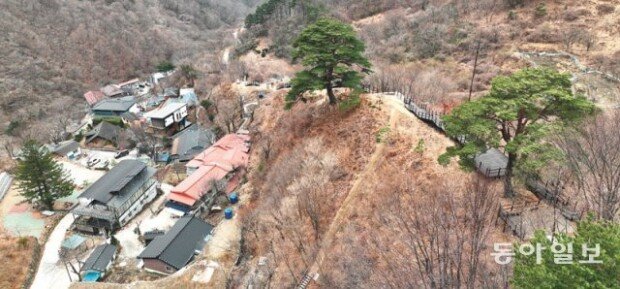The ‘keepers’ at national parks
The ‘keepers’ at national parks
Posted March. 26, 2022 07:26,
Updated March. 26, 2022 07:26

There are “keepers” at every national park across the country. Although they do not live in national parks, they frequently visit and take care of them. Thanks to their efforts, citizens can enjoy national parks without any inconvenience.
Park Chang-yong, 63, started climbing mountains in his 40s. Park, who used to make 8 billion won in annual sales by selling fabrics at Dongdaemun Market in Seoul, suffered a major setback in life when his business went bankrupt in early 2000s. He was able to overcome his frustration by climbing mountains. “Rock climbing helped me forget about everything and only focus on the rock in front of me. That is the charm of rock climbing,” Park said. He is now a 20-year veteran, who has climbed the rocks for almost 4,000 times.
Park is recently into Bukhansan National Park. There are many accidents at the National Park as it is frequented by 6.56 million visitors a year (as of 2020). Park would clear up fallen rocks and maintain damaged facilities whenever he went to the mountain. Finally in April 2020, he established a group of volunteers working for mountain safety.
The number of volunteers grew to about 80 in less than two years. Every Saturday, some 20 volunteers climb the rocks and clear the surroundings. Most of them check the areas, where the staff at the National Park cannot easily reach or rockslide often occurs. When climbing mountains, they not only carry climbing equipment, but also a sack to collect garbage. “It is sad to see leftover food waste on the mountain or climbing tools piercing through the rocks,” Park said.
Wang Gye, 58, from Taiwan has been working as a natural environment guide at Gyeongju National Park since 2012. A natural environment guide is someone who introduces the flora and fauna of national parks to visitors. Wang mainly guides Chinese tourists visiting Gyeongju National Park, but also offers environmental education to Korean students. It is also her job to constantly observe ecological changes in the national park.
After settling in Gyeongju, her husband’s hometown, in 1992, Wang worked as a Chinese language instructor but decided to become a natural environment guide because she wanted to learn more about Korea. Only three people from multicultural families were selected from across the country, and she was the only Chinese-speaking natural environment guide.
Gyeongju is the only national historic park among 22 national parks in the country. It has been designated as a national historic park as it is of high conservation value in terms of both nature and historic relics. “I was naturalized as a Korean citizen 17 years ago, but I still study Korean because the scientific names of animals and plants as well as historical terms are difficult,” Wang said. “I feel rewarding when visitors are admired by Korea’s natural and cultural heritage and satisfied with my guide.”
Sung-Min Park min@donga.com







